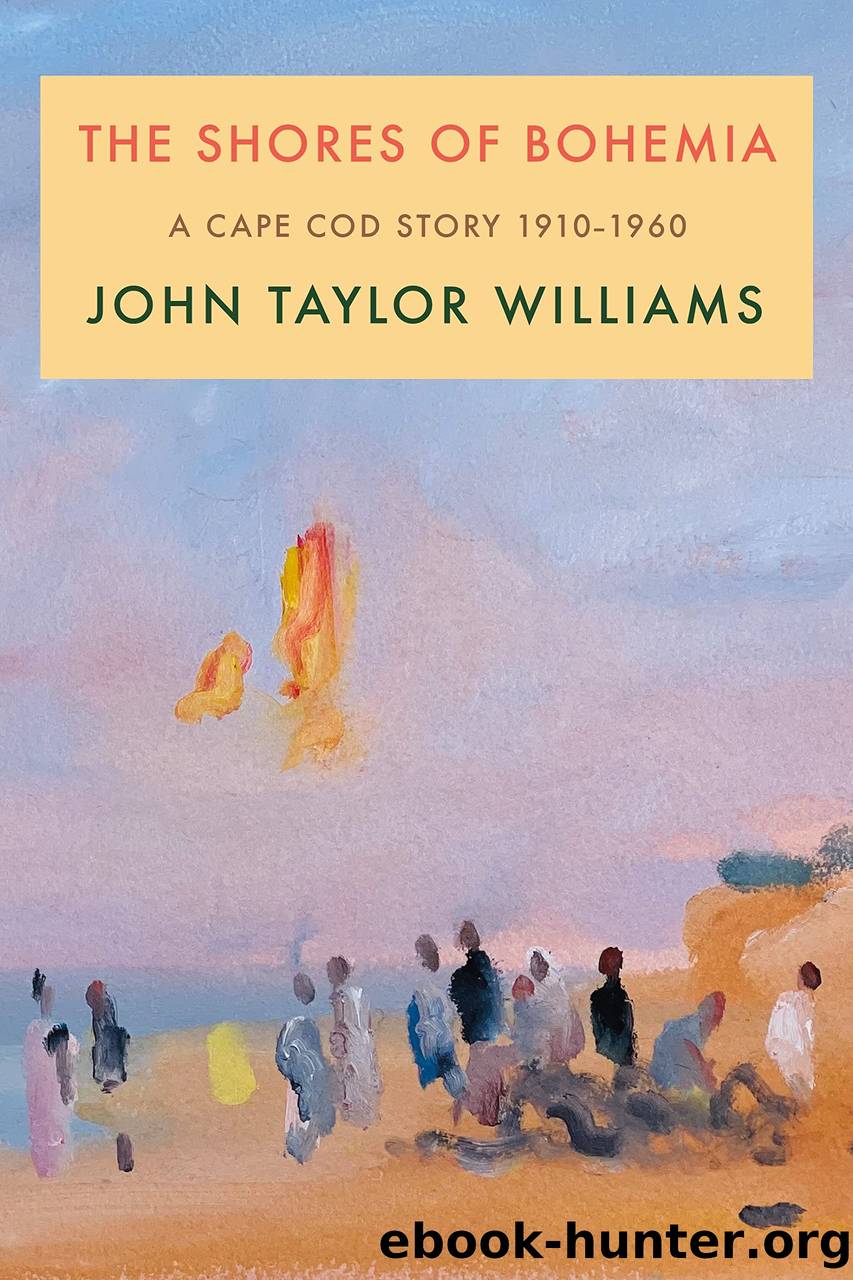The Shores of Bohemia by John Taylor Williams

Author:John Taylor Williams
Language: eng
Format: epub
Publisher: Farrar, Straus and Giroux
Not far away from the Wilsonâs in Truro, a weekend guest was having his own battle with alcohol. Charles Jackson, already a raging alcoholic, was staying with the bestselling novelist Robert Nathan, author of Portrait of Jennie, on his estate near Truro Center. At the close of the visit, Nathan asked Harl Cook to drive Jackson to Provincetown to catch his train, but instead Harl took him bar crawling and put him hopelessly drunk on the last train. Later, during a brief period of sobriety, Jackson revisited that weekend in his final novel, The Lost Weekend. It became not only a bestseller but an equally famous film. In a rare, raw, and honest portrait of a drunk, Ray Milland played Jackson in a scene in which the bartender describes him as a man whom one drink made drunk and yet a hundred were not enough.
Charles Hawthorne had observed the effect of alcoholism on his students and on Provincetown itself. He watched as the Victorian Provincetown he came to in 1898 became a tourist-dependent town whose main attractions were no longer fishermen and artists but its access to rumrunners. By the time he turned his classes and studio over to Hans Hofmann in 1934, Provincetown had become a much rowdier and alcohol-drenched town. The painters who came to study with Hofmann were mainly funded by the WPAâs Federal Art Project or later the G.I. Bill, so money for liquor was readily available. A bottle of beer was five cents and a quart of Kentucky straight whiskey $1.50. For painters like Jackson Pollock, Barnett Newman, Mark Rothko, Franz Kline, and Willem de Kooning, drinking was combined with work much the same as for writers, particularly those who chose to work at night. The bottle and ashtray stood on their palette table above a paint-splattered, cigarette- littered floor. Itâs a wonder that they werenât all incinerated, given the flammables in their crowded studios. If they werenât drinking in their studios, they were in the Flagship or the Atlantic House in Provincetown or the Cedar Tavern on West Eighth Street in the Village, all favored artistsâ âstrutting ground.â
These were, of course, the lucky ones who either were able to stop drinking or never used alcohol as a source of creativity.
Slater Brown, E. E. Cummingsâs old drinking pal from The Enormous Room and the 1920s Village, had pretty much destroyed his promise by age fifty, marrying and then abandoning wives and childrenâfirst running off with OâNeillâs stage director Jimmy Lightâs wife, Susan Jenkins, then leaving her and their son. Edmund Wilson discovered Brown in bed with his actress wife, Mary Blair. Dos Passos included him as a seducer fleeing an angry husband in Manhattan Transfer. He married again to a photographer who took their daughter to Provincetown and opened a highly regarded nursery school. He would occasionally visit drunk, mainly to see his old Village pals, the Wilsons, Dos Passos, and Bubs and Chauncey Hackett. Dodie Hall remembered him making a pass at her on one of those visits while in the Truro Post Office.
Download
This site does not store any files on its server. We only index and link to content provided by other sites. Please contact the content providers to delete copyright contents if any and email us, we'll remove relevant links or contents immediately.
| Actors & Entertainers | Artists, Architects & Photographers |
| Authors | Composers & Musicians |
| Dancers | Movie Directors |
| Television Performers | Theatre |
Cecilia; Or, Memoirs of an Heiress — Volume 3 by Fanny Burney(30934)
Cecilia; Or, Memoirs of an Heiress — Volume 2 by Fanny Burney(30889)
Fanny Burney by Claire Harman(25784)
We're Going to Need More Wine by Gabrielle Union(18072)
Plagued by Fire by Paul Hendrickson(16636)
Cat's cradle by Kurt Vonnegut(13866)
Bombshells: Glamour Girls of a Lifetime by Sullivan Steve(13108)
All the Missing Girls by Megan Miranda(12747)
Leonardo da Vinci by Walter Isaacson(11901)
4 3 2 1: A Novel by Paul Auster(11047)
Adultolescence by Gabbie Hanna(8145)
The remains of the day by Kazuo Ishiguro(7551)
Note to Self by Connor Franta(7024)
Diary of a Player by Brad Paisley(6866)
Giovanni's Room by James Baldwin(5877)
What Does This Button Do? by Bruce Dickinson(5527)
Recovery by Russell Brand(4564)
Born a Crime by Trevor Noah(4510)
The Kite Runner by Khaled Hosseini(4431)
